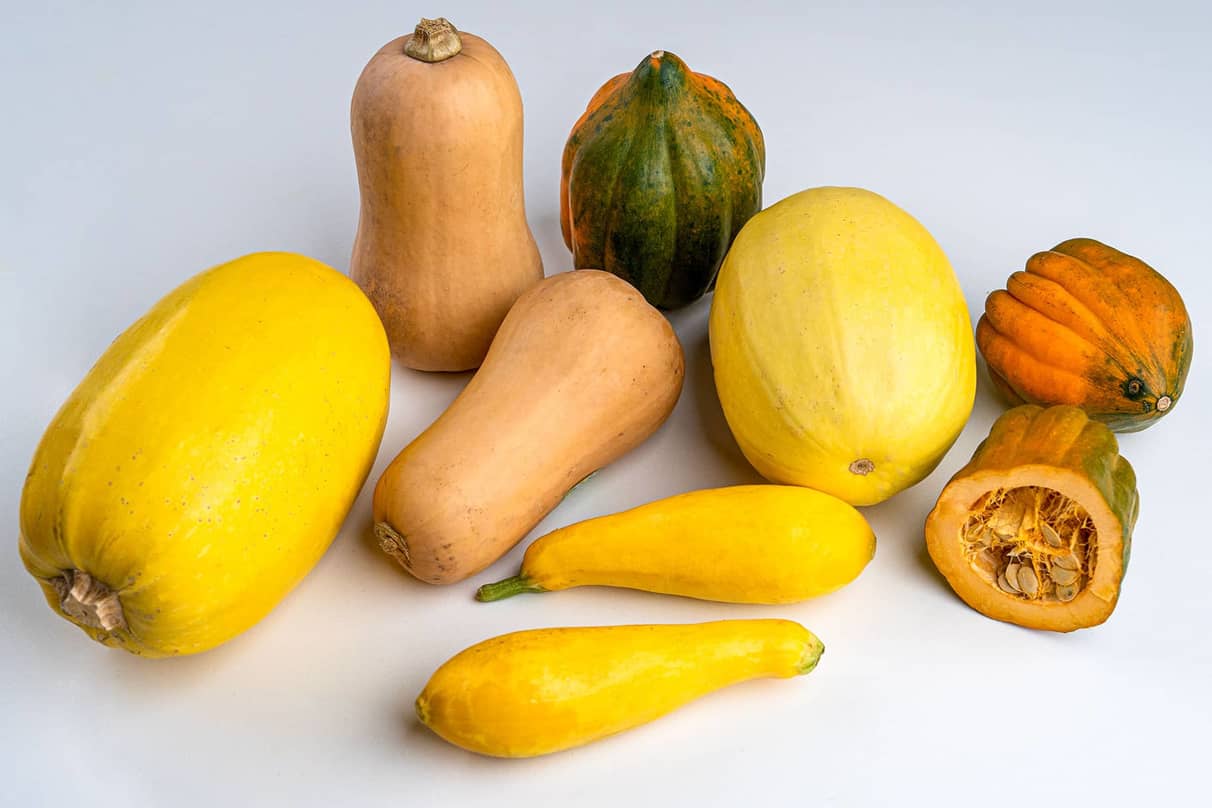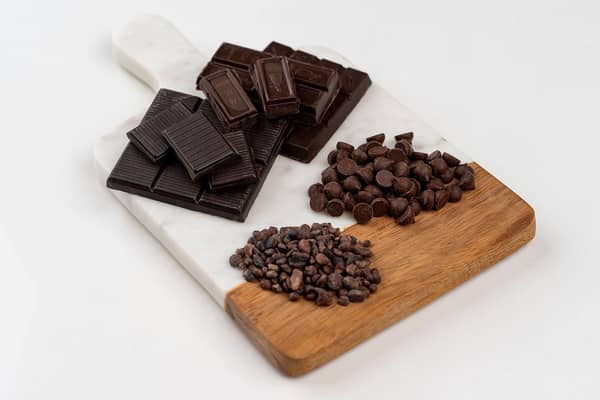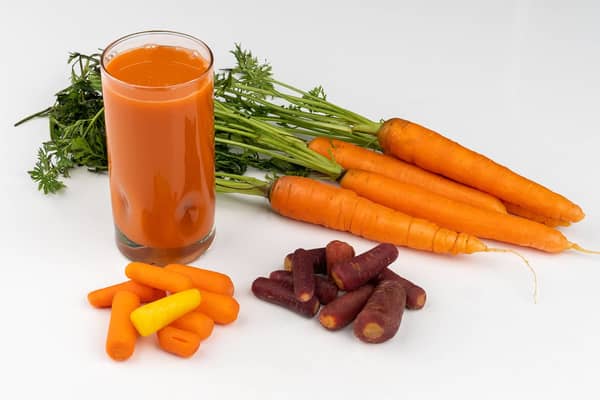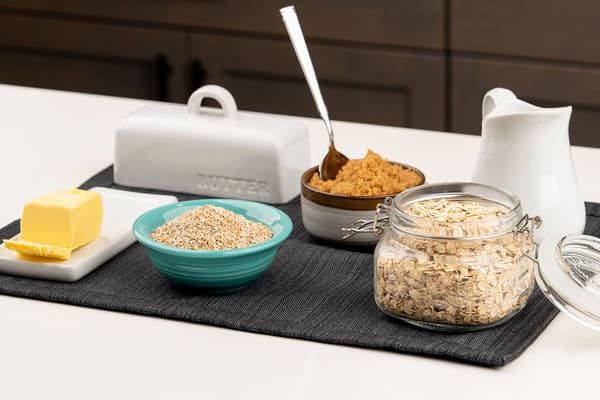5 Nutrient-Packed Winter Vegetables, According To Registered Dietitians
Nutrition
Discover the nutrient-dense veggies that are in high demand in the colder months.

Apart from tasting better and often being more affordable than out-of-season produce, there are a few other perks to buying seasonal veggies.
“For starters, locally grown produce supports the environment, as well as local farmers,” said Lisa Young, Ph.D., R.D.N., adjunct professor of nutrition at New York University.
Purchasing locally grown produce can also help reduce the population’s carbon footprint, as it eliminates the need to ship food hundreds (if not thousands) of miles across the country, according to Sarah Koszyk, M.A., R.D.N. “The produce is at its highest nutritional value since it is being harvested at peak season, providing all the vital minerals, antioxidants, phytochemicals and vitamins,” she said.
Here, both registered dietitian nutritionists offer their top nutrient-dense, versatile, and easy-to-find winter vegetables.
Health Benefits of 5 Winter Vegetables
1.Squash

“Despite its name, winter squash is grown in the summer and harvested in the fall,” Young said. She admitted to being a huge fan of butternut squash for its versatility and satiety, as well as its nutrition profile.
She explained that cooked butternut squash provides beta carotene (which converts to vitamin A and promotes healthy eyes and skin) as well as immune-boosting vitamin C. In addition, this type of squash contains potassium, a mineral that aids in heart function and muscle contraction. It's also low in calories. A one cup serving equals 80 calories — and offers more than 6 grams of fiber.
In addition, a study found in a 2016 issue of the journal Scientific Reports revealed that consuming yellow and orange vegetables was associated with reduced risk of heart disease. Researchers noted that just increasing consumption by one serving each day could lower the risk of heart disease by as much as 23 percent.
How to cook with squash:
Young suggested enjoying veggie either roasted, lightly sautéed in olive oil or pureed into a soup. “Squash is stored best in a cool and dark shelf in the kitchen or pantry,” she said.
2.Leeks

A cousin to garlic, onion, and chives, leeks are a nutrient-dense bulbous vegetable. And they're packed with numerous vitamins and minerals, including vitamin K and manganese, which are both necessary for blood clotting and healthy bones, Koszyk said.
“Similar to garlic, leeks also have allicin — a beneficial sulfur compound — which has been linked to anti-cancer properties, cholesterol-reducing benefits, and antimicrobial properties,” she said.
In a narrative review published in a 2018 issue of the journal Nutrients, researchers studied a variety of vegetables and their potential benefits in reducing the risk of chronic diseases. They found that consuming allium veggies (think: leeks, garlic, onions) may help lessen the likelihood of suffering heart attack or stroke.
How to cook with leeks:
A classic way to enjoy this winter vegetable is to make potato leek soup, Koszyk said. Other suggestions include tossing it into an omelet or frittata, sprinkling on pizza, or sautéing to either serve as a side vegetable dish or mixed in a pasta sauce.
“A highlight of leeks is that they can be a part of no-waste cooking by using the entire leek — even the rough outer leaves and the roots — to make a stock, broth, or sauce with those parts,” she said.
Keep in mind that leeks need to be thoroughly scrubbed before they are cooked.
“Leeks tend to have a lot of dirt inside, so after slicing this vegetable, thoroughly wash it in a colander,” Koszyk said. In terms of storage, she suggested placing fresh, unwashed, and untrimmed leeks in a container and putting them in the fridge for up to two weeks.
3.Beets

Young referred to this root vegetable as a “nutrition powerhouse” due to the fact that it’s rich in a variety of nutrients, including folate, a B-vitamin that encourages DNA production and cell division. Beets are also a good source of iron, an essential mineral that’s necessary for carrying oxygen from the lungs throughout the body, and fiber — a plant substance that supports digestion and weight management.
“Beets also contain betalains, a powerful antioxidant, which gives this veggie its deep red color, and offer numerous health benefits, such as possibly helping to fight cancer, heart disease, and high blood pressure,” Young said.
A review published in a 2021 issue of the journal Food Science & Nutrition found that the betalains in beetroot may also assist in lowering blood glucose levels, enhancing athletic performance by minimizing muscle soreness.
How to cook with beets:
Beets can be roasted, and then tossed into a salad or smoothie and can be stored for a short time in a cool, dark part of the refrigerator, Young said. “They can also stay on the counter for up to three months,” she added.
4.Collard Greens

A leafy, cruciferous vegetable that belongs to the same species as cabbage, kale, and broccoli, collard greens boast many nutrients. This includes vitamin K, which is supportive for bone health and can also assist in blood clotting (which helps a wound stop from bleeding in order to start healing).
“This winter vegetable is high in fiber, along with being rich with phenols, polyphenols, and alpha-lipoic acid — all antioxidants, which have been shown to reduce inflammation, protect the body from free radicals and lower the risk of cancer and heart disease,” Koszyk said.
And there’s plenty of research to support that. For instance, a medical review published in a 2021 issue of the journal Frontiers in Pharmacology identified an association between glucosinolates (phytochemicals found almost exclusively in cruciferous vegetables) and the prevention and management of numerous chronic conditions. These include cardiovascular diseases, neurological conditions (such as depression), and musculoskeletal disorders.
How to cook with collard greens:
One way to enjoy collard greens is as a side dish sautéed in olive oil. Koszyk also recommended adding chopped collard greens to a salad or slaw, or swapping out romaine lettuce for collard greens to make a leafy wrap. Another hack? Purée collard greens and create a pesto-like sauce by mixing in olive oil, pine nuts, and Parmesan cheese.
“This green veggie is so versatile, it can be used like spinach or kale and added to soups, stews or even as a pizza topping,” Koszyk said. “Similar to kale chips, collard green chips make for a salty, crunchy snack.”
Collard greens can be stored in the refrigerator for about one week.
5.Rutabagas

A cross between a turnip and a cabbage, rutabagas are rich in glucosinolates, along with two important electrolytes for athletes: magnesium and potassium, Koszyk said.
“Thanks to the high vitamin C and vitamin E content as well as the glucosinolates, rutabagas can also assist with the synthesis of collagen and protect the skin from UV damage, which can optimize skin health,” she said.
How to cook with rutabagas:
Consider roasting the root vegetable and preparing it as a side dish, or substituting sweet potatoes for rutabagas to make fries.
“Since rutabagas are sweet and slightly bitter, giving a lovely flavor when mixed with spices and herbs, I like making a rutabaga mash, similar to a potato or cauliflower mash,” Koszyk said.
She said she recommends buying firm, heavy rutabagas and storing them for a week at room temperature or in the fridge for about two weeks.
Words by Amy Capetta





